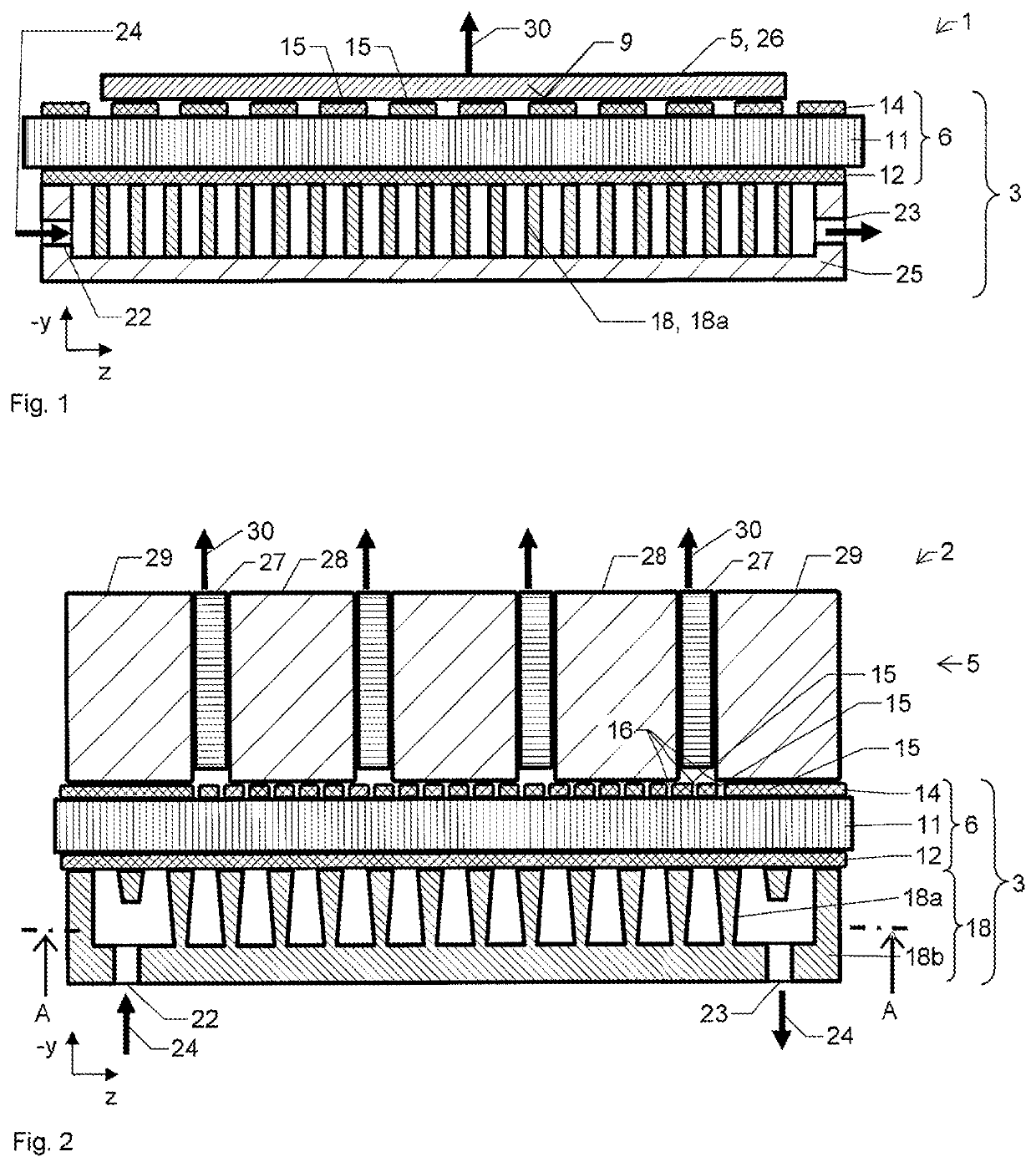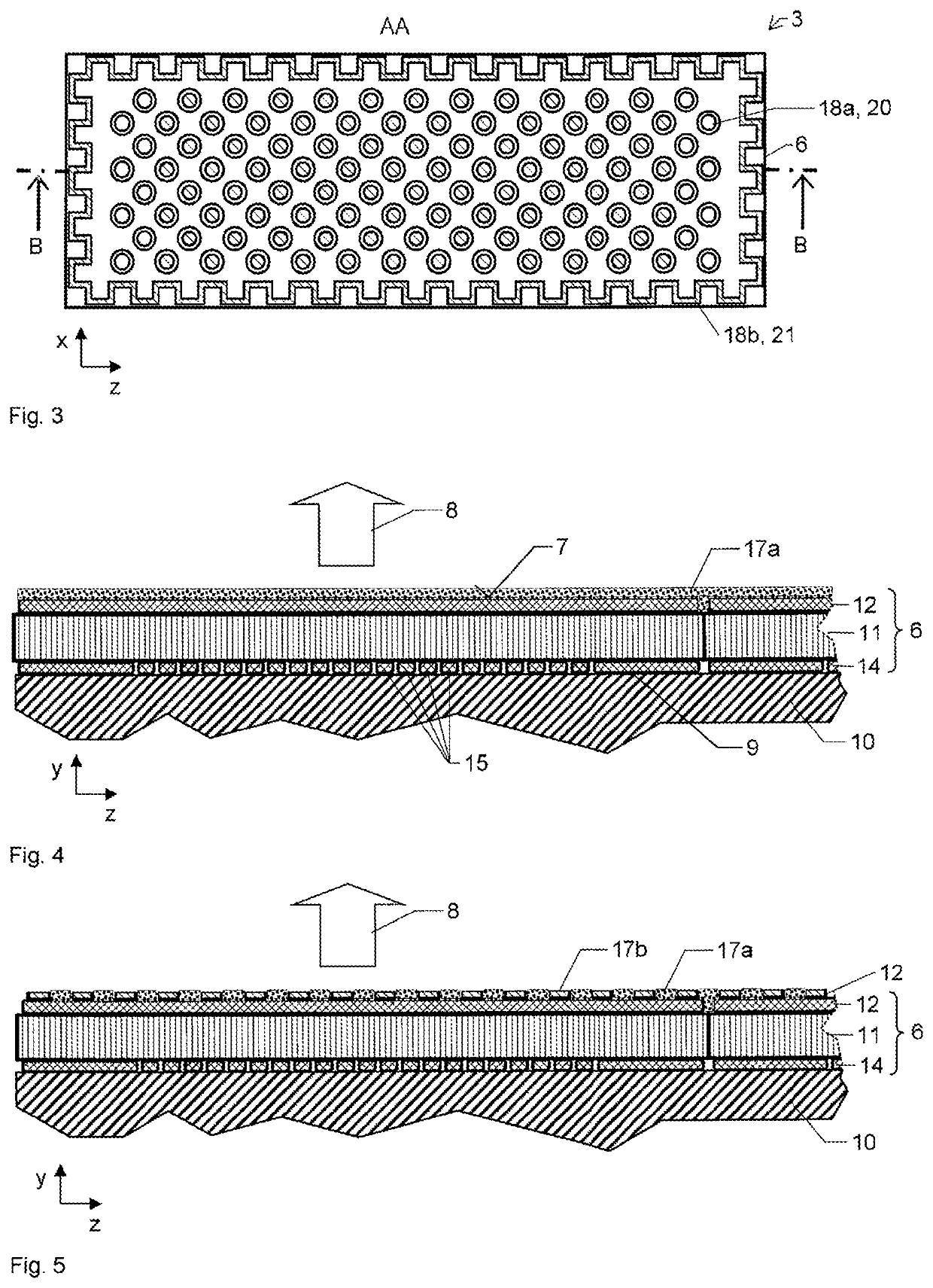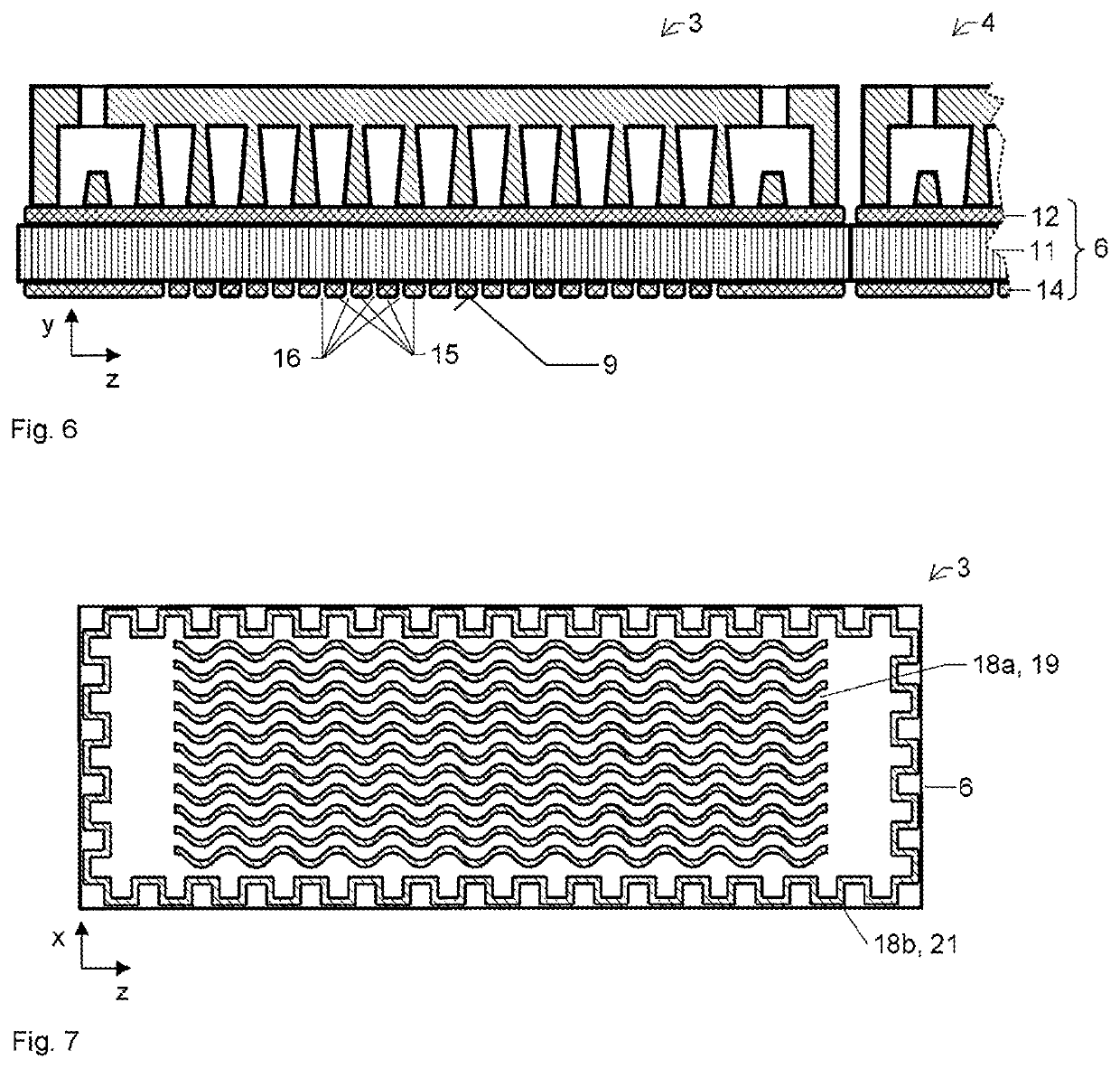Optical and optoelectronic assembly and method for the production thereof
a production method and technology of optical or optoelectronic components, applied in semiconductor lasers, additive manufacturing processes, semiconductor/solid-state device details, etc., can solve the problems of poor heat transfer, limited structural design of the cooler, and the mounting surface of the component is in electrical contact with the heat sink, etc., to achieve a simple and cost-effective production method, the effect of reducing the cost of cooling
- Summary
- Abstract
- Description
- Claims
- Application Information
AI Technical Summary
Benefits of technology
Problems solved by technology
Method used
Image
Examples
Embodiment Construction
[0076]FIG. 1 shows a second exemplary embodiment of an optical assembly 1 in a yz section. The assembly comprises a cooler 3 and an optical component 5, which is present as a laser disk 26. During operation, a laser radiation 30 is emitted in the −y direction. In order to dissipate the waste heat from the laser disk 26, a coolant flow 24 is used. Water, for example, is considered as coolant. The cooler 3 comprises a composite plate 6, a cooler structure 18, which is present here as an inner cooler structure 18a, and also a hood 25, which delimits the coolant flow from the surroundings. A coolant inlet 22 and a coolant outlet 23 are incorporated into the hood 25. The composite plate 6 comprises a first nonmetallic layer 11, a first metallic layer 12 and a second metallic layer 14, which is subdivided into a plurality of second regions 15. The second metallic layer 14 has a mounting surface 9, to which the laser disk 26 is secured. In this case, the laser disk 26 covers a plurality of...
PUM
| Property | Measurement | Unit |
|---|---|---|
| thick | aaaaa | aaaaa |
| thickness | aaaaa | aaaaa |
| thickness | aaaaa | aaaaa |
Abstract
Description
Claims
Application Information
 Login to View More
Login to View More - R&D
- Intellectual Property
- Life Sciences
- Materials
- Tech Scout
- Unparalleled Data Quality
- Higher Quality Content
- 60% Fewer Hallucinations
Browse by: Latest US Patents, China's latest patents, Technical Efficacy Thesaurus, Application Domain, Technology Topic, Popular Technical Reports.
© 2025 PatSnap. All rights reserved.Legal|Privacy policy|Modern Slavery Act Transparency Statement|Sitemap|About US| Contact US: help@patsnap.com



